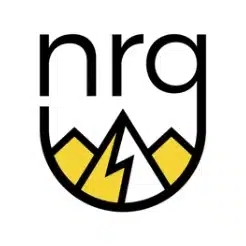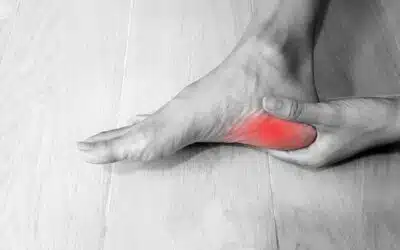Introduction
A. Explanation of neck pain and its prevalence
Neck pain is a common problem that affects millions of people worldwide, and it can be a debilitating condition that can significantly impact an individual’s quality of life. Neck pain can manifest in various forms, such as stiffness, soreness, and sharp pain. It can also radiate to the shoulders, arms, and head, leading to headaches and migraines. The pain can be caused by various factors, including poor posture, muscle strain or sprain, herniated or bulging disc, pinched nerve, osteoarthritis, degenerative disc disease, or whiplash.
Neck pain can affect anyone, regardless of age, gender, or occupation. However, certain factors such as age, occupation, and lifestyle choices can increase the likelihood of developing neck pain. For instance, individuals who spend long hours sitting at a desk or using a computer are at a higher risk of developing neck pain due to poor posture and prolonged periods of inactivity.
B. Importance of physiotherapy in treating neck pain
Physiotherapy is a non-invasive, drug-free, and effective treatment option for managing neck pain. It involves assessing, diagnosing, and treating musculoskeletal disorders, including neck pain. Physiotherapists are healthcare professionals who are trained to identify the underlying causes of neck pain and develop personalized treatment plans to alleviate the symptoms and improve the patient’s overall quality of life.
Physiotherapy can help relieve neck pain and improve the range of motion by using a combination of hands-on techniques, exercise therapy, modalities, and patient education. Hands-on techniques involve the manual manipulation of soft tissue and joints to improve mobility, reduce pain, and restore function. Exercise therapy is designed to strengthen the neck and shoulder muscles, improve posture, and increase range of motion. Modalities such as heat and cold therapy, ultrasound therapy, and electrical stimulation can also be used to manage pain and promote healing.
Patient education is a crucial component of physiotherapy, as it helps patients understand the underlying causes of their neck pain and learn self-management techniques to prevent future episodes.
Physiotherapists can educate patients on proper ergonomics, posture, and lifestyle modifications to reduce neck pain risk.
In conclusion, neck pain is a prevalent condition that can significantly impact an individual’s quality of life. Physiotherapy is a safe, effective, non-invasive treatment option for neck pain management. By using a combination of hands-on techniques, exercise therapy, modalities, and patient education, physiotherapists can help patients alleviate their symptoms, improve their range of motion, and achieve a better quality of life.

Causes of Neck Pain
Neck pain can have many causes, ranging from poor posture to injuries or medical conditions. Here are some of the most common causes of neck pain:
A. Poor posture
Poor posture is a common cause of neck pain. Sitting or standing with your shoulders hunched forward and your head tilted down puts a strain on your neck muscles and can cause pain. Poor posture can also lead to muscle imbalances, which can exacerbate neck pain.
B. Muscle strain or sprain
Muscle strain or sprain can occur when the muscles and ligaments in your neck are overstretched or torn. This can happen due to sudden movements, such as whiplash, or from prolonged activities that strain the neck muscles, such as holding your head in a fixed position for extended periods.
C. Herniated or bulging disc
The spinal discs in your neck can herniate or bulge, which can put pressure on the nerves that run through your neck and cause pain. A herniated or bulging disc can occur due to age-related wear and tear or from a sudden injury.
D. Pinched nerve
A pinched nerve can occur when there is pressure on the nerve from surrounding tissues, such as a herniated disc or bone spur. Pinched nerves in the neck can cause pain that radiates down the arm and into the hand.
E. Osteoarthritis or degenerative disc disease
Osteoarthritis and degenerative disc disease are conditions that cause the breakdown of cartilage in the neck. This can cause the bones in the neck to rub against each other, leading to pain and stiffness.
F. Whiplash
Whiplash is a type of neck injury that occurs when the head is suddenly jolted forward and then backwards, such as in a car accident. This can cause damage to the muscles, ligaments, and nerves in the neck, leading to pain and stiffness.
In conclusion, neck pain can have many causes, ranging from poor posture to injuries or medical conditions. Identifying the underlying cause of neck pain is crucial for developing an effective treatment plan. A physiotherapist can help diagnose the cause of your neck pain and develop a personalized treatment plan to alleviate your symptoms and improve your range of motion.
How Physiotherapy Helps with Neck Pain
A. Assessment and diagnosis
The first step in treating neck pain with physiotherapy is assessment and diagnosis. A physiotherapist will thoroughly evaluate your neck, including the range of motion, strength, and posture. They will also ask about your medical history, lifestyle, and previous injuries or surgeries. Based on the evaluation results, the physiotherapist will diagnose the underlying cause of your neck pain and develop a personalized treatment plan.
B. Hands-on treatment
Hands-on treatment techniques involve manual manipulation of the soft tissue and joints to improve mobility, reduce pain, and restore function. Examples of hands-on techniques include soft tissue massage, joint mobilization and manipulation, trigger point therapy, and dry needling. These techniques can help alleviate pain and tension in the neck and surrounding muscles.
C. Exercise therapy
Exercise therapy is an essential component of physiotherapy for neck pain. The physiotherapist will develop a customized exercise program that includes stretching, strengthening, and postural exercises. These exercises can help improve the range of motion, reduce muscle tension, and improve posture. The physiotherapist may also use coordination and balance exercises to help improve overall function and reduce the risk of falls.
D. Modalities
Modalities are therapeutic techniques that use external physical agents to manage pain and promote healing. Examples of modalities include heat and cold therapy, ultrasound therapy, and electrical stimulation. These techniques can help reduce pain and inflammation and improve circulation to the affected area.
E. Patient education
Patient education is a crucial component of physiotherapy for neck pain. The physiotherapist will provide education on proper ergonomics and posture to reduce the risk of future episodes of neck pain. They may also teach self-management techniques, such as relaxation and stress management, to help patients manage their symptoms better.
In conclusion, physiotherapy is an effective and non-invasive treatment option for managing neck pain. By using a combination of assessment and diagnosis, hands-on treatment, exercise therapy, modalities, and patient education, physiotherapists can help alleviate pain and improve the range of motion of individuals with neck pain. If you are experiencing neck pain, seek the help of a physiotherapist to develop a personalized treatment plan that can help you manage your symptoms and improve your quality of life.

Hands-On Treatment Techniques for Neck Pain
Hands-on treatment techniques are an essential component of physiotherapy for neck pain. These techniques involve manual manipulation of the soft tissue and joints to improve mobility, reduce pain, and restore function. Here are some of the most common hands-on treatment techniques for neck pain:
A. Soft tissue massage
Soft tissue massage is a hands-on technique that involves applying pressure to the soft tissues in the neck, such as muscles and tendons. This can help reduce muscle tension and improve blood flow to the affected area. Soft tissue massage can also help reduce pain and improve the range of motion in the neck.
B. Joint mobilization and movement
Joint mobilization and movement techniques involve the application of gentle pressure and controlled movements to the joints in the neck. These techniques aim to improve mobility, reduce stiffness, and alleviate pain. The physiotherapist will use skilled manual therapy to gently guide the joints through their natural range of motion, promoting flexibility and restoring optimal function in the neck.
C. Trigger point therapy
Trigger point therapy is a hands-on technique that involves applying pressure to specific trigger points in the neck. Trigger points are areas of muscle that are tender and painful when pressure is applied. By applying pressure to these points, the physiotherapist can help reduce muscle tension and improve the range of motion.
D. Dry needling
Dry needling is a technique that involves inserting thin needles into specific trigger points in the neck. This can help reduce muscle tension and improve range of motion. Dry needling is a safe and effective technique that can be used in conjunction with other hands-on treatment techniques.
In conclusion, hands-on treatment techniques are an important component of physiotherapy for neck pain. Soft tissue massage, joint mobilization and manipulation, trigger point therapy, and dry needling are all effective techniques that can help reduce pain, improve the range of motion, and restore function in the neck. If you are experiencing neck pain, seek the help of a physiotherapist to develop a personalized treatment plan that includes hands-on treatment techniques to help manage your symptoms.
Exercise Therapy for Neck Pain
Exercise therapy is an important component of physiotherapy for managing neck pain. Exercise can help improve flexibility, strength, posture, and range of motion, which can all help alleviate pain and improve function. Here are some of the most common types of exercise therapy used for neck pain:
A. Stretching exercises
Stretching exercises are designed to improve neck flexibility and range of motion. The physiotherapist will develop a customized stretching program that includes exercises to stretch the neck, shoulders, and upper back muscles. Examples of stretching exercises include neck rotations, chin tucks, and shoulder rolls.
B. Strengthening exercises
Strengthening exercises are designed to improve the strength and endurance of the muscles in the neck and shoulders. The physiotherapist will develop a customized strengthening program that includes exercises to strengthen the neck, shoulders, and upper back muscles. Examples of strengthening exercises include neck isometrics, shoulder blade squeezes, and resistance band exercises.
C. Postural exercises
Postural exercises are designed to improve posture and reduce the risk of future episodes of neck pain. The physiotherapist will develop a customized postural program that includes exercises to improve posture and reduce muscle tension. Examples of postural exercises include chin tucks, shoulder blade squeezes, and wall angels.
D. Coordination and balance exercises
Coordination and balance exercises are designed to improve overall function and reduce the risk of falls. The physiotherapist will develop a customized coordination and balance program that includes exercises to improve balance and coordination. Examples of coordination and balance exercises include walking on a balance beam, standing on one leg, and heel-to-toe walking.
In conclusion, exercise therapy is an important component of physiotherapy for managing neck pain. Stretching exercises, strengthening exercises, postural exercises, and coordination and balance exercises can all help improve flexibility, strength, posture, and range of motion in the neck, which can help alleviate pain and improve function. If you are experiencing neck pain, seek the help of a physiotherapist to develop a personalized exercise program that can help you manage your symptoms and improve your quality of life.
Modalities for Neck Pain
Modalities are therapeutic techniques that use external physical agents to manage pain and promote healing. Modalities can be an effective component of physiotherapy for managing neck pain. Here are some of the most common modalities used for neck pain:
A. Heat and cold therapy
Heat and cold therapy are commonly used modalities for managing neck pain. Heat therapy involves applying a warm compress or hot pack to the affected area to improve blood flow and reduce muscle tension. Cold therapy involves applying an ice pack or cold compress to the affected area to reduce inflammation and numb pain. Heat and cold therapy can be used alone or in combination to manage neck pain.
B. Ultrasound therapy
Ultrasound therapy is a modality that uses high-frequency sound waves to promote healing and reduce pain in the affected area. The physiotherapist will apply a gel to the skin and use a handheld device to administer the ultrasound waves to the affected area. Ultrasound therapy can help reduce inflammation, improve blood flow, and reduce pain in the neck.
C. Electrical stimulation
Electrical stimulation is a modality that uses electrical currents to stimulate the muscles and nerves in the affected area. The physiotherapist will attach electrodes to the skin and use a machine to administer electrical currents to the affected area. Electrical stimulation can help reduce pain, improve muscle strength, and promote healing in the neck.
D. TENS therapy
TENS (Transcutaneous Electrical Nerve Stimulation) therapy is a modality that uses a low-voltage electrical current to stimulate the nerves in the affected area. The physiotherapist will attach electrodes to the skin and use a machine to administer the electrical current to the affected area. TENS therapy can help reduce pain and improve muscle strength in the neck.
In conclusion, modalities can be an effective component of physiotherapy for managing neck pain. Heat and cold therapy, ultrasound therapy, electrical stimulation, and TENS therapy are all commonly used modalities that can help reduce pain, improve muscle strength, and promote healing in the neck. If you are experiencing neck pain, seek the help of a physiotherapist to develop a personalized treatment plan that includes modalities to help manage your symptoms.
Patient Education for Neck Pain
Patient education is a crucial component of physiotherapy for managing neck pain. The physiotherapist will provide education on proper ergonomics and posture, lifestyle modifications, home exercise programs, and self-management techniques. Here are some of the most important patient education topics for managing neck pain:
A. Ergonomics and posture
Proper ergonomics and posture are essential for reducing the risk of neck pain. The physiotherapist will teach patients how to sit and stand properly and provide advice on how to adjust workstations to reduce strain on the neck. This may include adjusting the height of computer monitors, chairs, and desks to maintain a neutral spine and reduce strain on the neck muscles.
B. Lifestyle modifications
Lifestyle modifications can also be helpful in reducing the risk of neck pain. The physiotherapist may provide advice on how to maintain an active lifestyle, eat a healthy diet, and avoid smoking, which can all contribute to overall health and reduce the risk of neck pain.
C. Home exercise program
A home exercise program is an essential component of physiotherapy for managing neck pain. The physiotherapist will develop a customized exercise program that patients can do at home to help improve strength, flexibility, and range of motion in the neck. The physiotherapist will provide instructions on how to perform the exercises properly and safely to reduce the risk of injury.
D. Self-management techniques
Self-management techniques can help patients manage their symptoms and reduce the risk of future episodes of neck pain. The physiotherapist may provide advice on relaxation techniques, stress management, and pain management strategies. This may include techniques such as deep breathing, meditation, and mindfulness practices.
In conclusion, patient education is a crucial component of physiotherapy for managing neck pain. Proper ergonomics and posture, lifestyle modifications, home exercise programs, and self-management techniques can all help reduce the risk of neck pain and improve overall quality of life. If you are experiencing neck pain, seek the help of a physiotherapist to develop a personalized treatment plan that includes patient education to help you manage your symptoms and improve your quality of life.
Conclusion
In conclusion, physiotherapy is a safe and effective treatment option for managing neck pain. Physiotherapy can help alleviate pain, improve the range of motion, and restore function in the neck through a combination of assessment and diagnosis, hands-on treatment, exercise therapy, modalities, and patient education. Hands-on treatment techniques such as soft tissue massage, joint mobilization and manipulation, trigger point therapy, and dry needling can help reduce pain and tension in the neck, while exercise therapy can help improve flexibility, strength, and posture. Modalities such as heat and cold therapy, ultrasound therapy, electrical stimulation, and TENS therapy can help reduce pain and promote healing. Patient education can also help patients manage their symptoms and reduce the risk of future episodes of neck pain.
Future implications for physiotherapy and neck pain management
As research continues to evolve, there is growing evidence supporting the effectiveness of physiotherapy for managing neck pain. Future studies may explore the use of new technologies, such as virtual reality and telehealth, to improve access to physiotherapy services for individuals with neck pain. Ongoing research may help identify new treatment techniques and strategies for managing neck pain.
If you are experiencing neck pain, seek the help of a physiotherapist to develop a personalized treatment plan that includes assessment and diagnosis, hands-on treatment, exercise therapy, modalities, and patient education. At Northwest Rehab, our experienced physiotherapists specialize in treating neck pain and can help develop a customized treatment plan to help manage your symptoms and improve your quality of life.
Don’t let neck pain affect your daily life. Contact Northwest Rehab today to schedule a consultation with one of our physiotherapists and start your journey towards a pain-free neck.
References used in this article:
- Higgs, J. B., & Olson, S. L. (2020). Management of Neck Pain. In StatPearls [Internet]. StatPearls Publishing. Available from: https://www.ncbi.nlm.nih.gov/books/NBK513312/
- Gross, A., Kay, T., Hondras, M., Goldsmith, C., Haines, T., Peloso, P., … & Santaguida, P. L. (2015). Cervical Overview Group. Manual therapy for mechanical neck disorders: a systematic review. Manual therapy, 20(1), 109-119.
- Bronfort, G., Evans, R., Anderson, A. V., Svendsen, K. H., Bracha, Y., & Grimm, R. H. (2010). Spinal manipulation, medication, or home exercise with advice for acute and subacute neck pain: a randomized trial. Annals of internal medicine, 153(1), 1-9.
- Alpini, D. C., Zaina, F., & Negrini, S. (2014). Exercise interventions for the treatment of chronic low back pain: a systematic review and meta-analysis of randomized controlled trials. Clinical rehabilitation, 28(8), 795-806.
- National Institute of Neurological Disorders and Stroke. (2021). Neck Pain Information Page
- American Physical Therapy Association. (2021). Neck Pain
- Physiotherapy Alberta College + Association. (2021). Neck Pain. Available from: https://www.physiotherapyalberta.ca/physiotherapy-can-help/neurological_conditions/neck_pain
These references provide evidence-based information on neck pain management using physiotherapy techniques, including assessment and diagnosis, hands-on treatment, exercise therapy, modalities, and patient education.






0 Comments